hankyoreh
Links to other country sites 다른 나라 사이트 링크
[Korea travels] From BTS sites to stunning sunsets, you won’t “Wanju” miss what this county has to offer
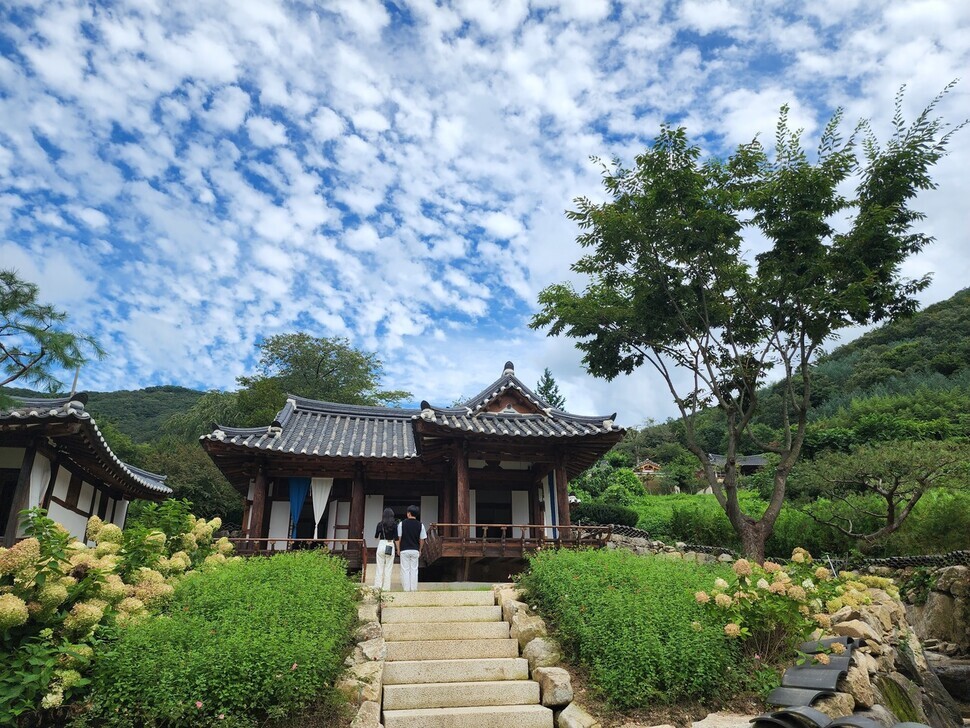
Wanju County in North Jeolla Province has a name that literally means “perfect county.”
Situated at the center of the province’s northern part, it flanks the city of Jeonju. It sits adjacent to seven cities and counties in all, including Jinan, Gimje and Iksan.
Positioned as a kind of crossroads to different regions, it boasts an exquisite landscape — a harmonious blend of mountains and rivers. It is surrounded on three sides by hilly terrain, with the Mangyeong River flowing across the Honam plains.
Wanju has also been described as a “pilgrimage site” for fans of the K-pop group BTS. Since word spread that this was where the group shot the music video and photo collection for their “BTS Summer Package 2019 in Korea,” the county has been bombarded with visits from members of the group’s fanbase, known as Army, and others. “Pilgrimage courses” have even been created, with stops at Oseong Hanok Village and Wibongsanseong Fortress.
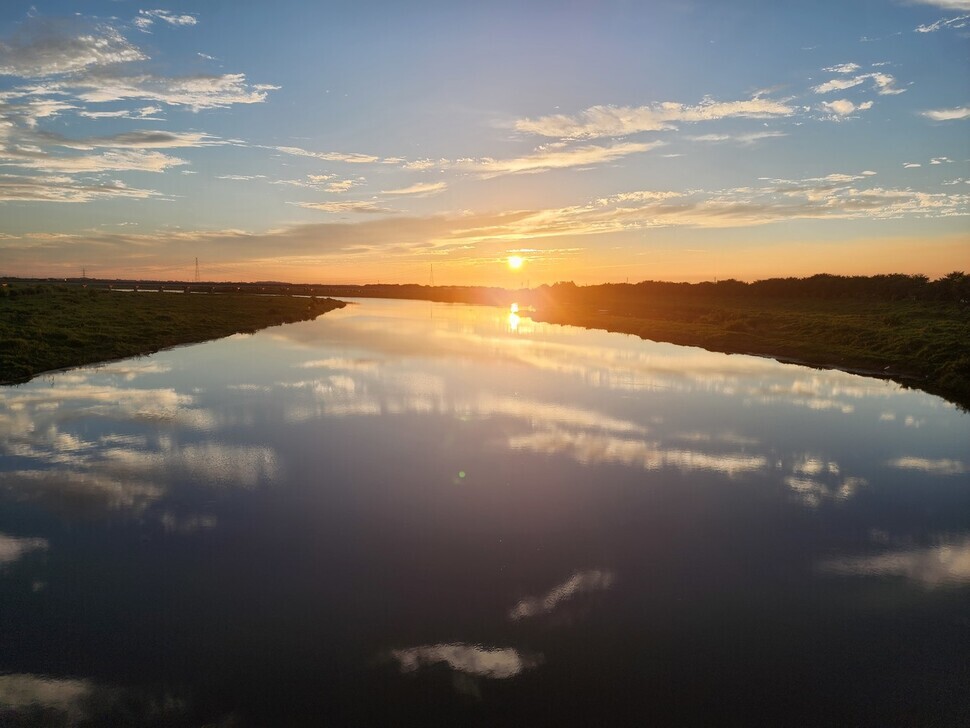
With so many places to visit, including the mountains, river, and BTS pilgrimage sites, Wanju has a great variety of courses that are ideal for autumn walks that you won’t “Wanju” miss.
On Sept. 1, I headed to Bam Spring, a source located in the Dongsang township that provides the starting point for one walking course known as the “Mangyeong River Route.”
Clear water flows from the small spring, which is marked with piles of stones at the entrance. From here, it passes by the townships of Gosan, Bongdong and Samrye and the neighboring cities of Iksan, Gimje and Gunsan before emptying into the West Sea. This is a route that was created to follow the waterway.
The stretch from the Dongsan riverhead to Haejeon Village in Samrye continues for around 52 kilometers (32 miles) and includes seven courses in all:
1. Bam Spring Route (from Dongsang’s Bamti Village to Bam Spring)
2. Winding Route (Bamti Village to Geoin Village)
3. Changpo Route (Changpo Village to Sesimjeong Pavilion in Gosan)
4. Sesimjeong Route (Sesimjeong Pavilion to Sangjanggi Park in Bongdong)
5. Ginger Route (Sangjanggi Park, Bongdong Bridge, and Hoepo Bridge)
6. Sincheon Wetland Route (Hoepo Bridge, Hari Bridge, Samrye Bridge, Bibijeong Pavilion)
7. Bibijeong Route (Bibijeong Pavilion to Haejeon)
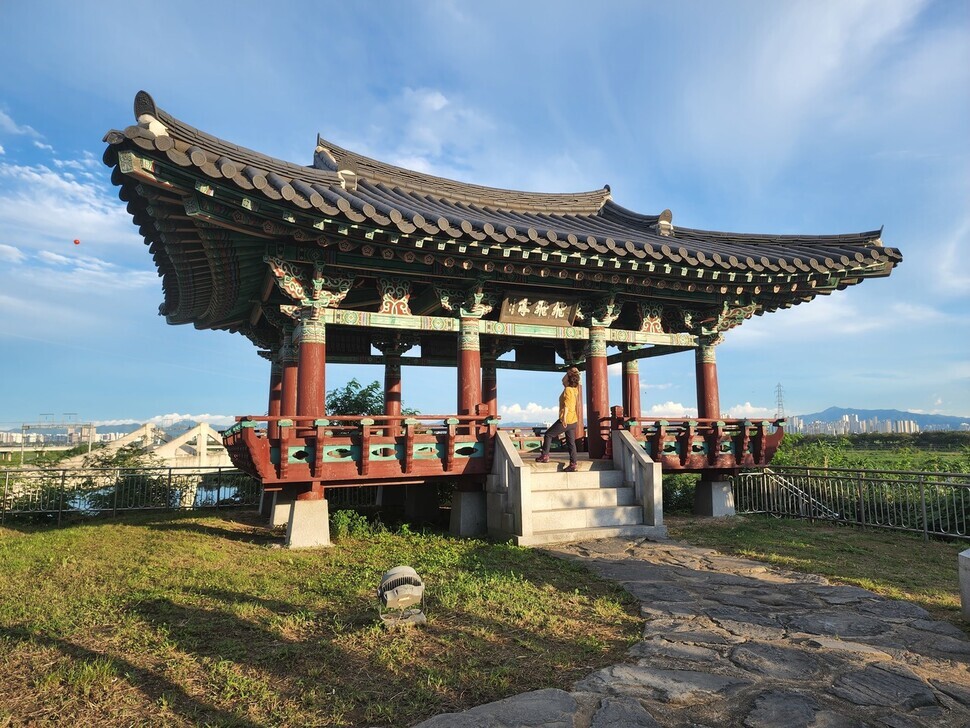
Walking along the Mangyeong River Route allows visitors to see all the different corners of Wanju. It’s a great route for eco-tourism, thanks to the presence of the Sincheon wetlands, which have been called the “lungs” of the Mangyeong. They are home to around 300 aquatic plant species, including the yellow floating-heart and prickly water lily, as well as 10 endangered species, including the Eurasian spoonbill and Eurasian otter.
Perhaps the best autumn course is No. 7. This route runs from Bibijeong — a pavilion with a name meaning “where wild geese rest” — to the village of Haejeon in the Samrye township. On foot, it’s a roughly hour-and-a-half round trip.
Traveling up to route No. 7’s starting point of Bibijeong Pavilion on a hill next to the Mangyeong River, you can see the old structure of the Mangyeong River Rail Bridge (National Registered Cultural Heritage No. 579). Built during the Japanese occupation, this bridge was used to plunder rice that had been harvested in the Honam plain rice basket.
The bridge was closed following the construction of a new one as part of a 2011 project to add new tracks on the Jeolla railway line. Currently, the “Bijijeong Art Train” operates on a portion of the discontinued railway bridge as a combination cafe/cultural recreation space created by renovating four former Saemaeul train cars.
Sunset, in particular, is a time when visitors to the pavilion can take in a wide-open view of the river and the beautiful twilight glow. It’s even more special because of the two different glows on display: one in the sky, and the other reflected on the river’s surface.
“The seventh course, the Mangyeong River Route, boasts a beautiful landscape of twilight and silver grass in the fall,” said Lee Hyeon-gwi, a tourist guide for the county.
“It’s a great walking route for people who enjoy a sentimental feeling. There are a lot of great places for taking photographs along it, and it has become popular enough that people come from distant places to take wedding pictures there.”

Oseong Hanok Village in the Soyang township boasts a collection of elegant traditional Korean hanok houses, making it a perfect setting for slow and contemplative strolls.
With a name that refers to the five sages born there, Oseong has long been renowned as a propitious site in feng shui terms. With the peaks of Jungnam and Wibong Mountains flanking it like a folding screen, the village has around 20 traditional hanok structures, some of them quite old, along with small galleries and coffee houses making use of the old houses. One of these is the Awon Museum and Hotel, where the members of BTS stayed during their visit.
Located amid steep foothills, Oseong Hanok Village offers an enjoyable experience of taking in the old hanok structures and low earthen walls. A closer look at the traditional styles of the older buildings — including the push-up windows, broad wooden-floor halls, and ash gray tiles — offers a glimpse at the flavor of hanok structures and architecture.
The history of the hanok buildings adds another fascinating element, with the way that they harmonize with nature to form one big landscape.
The “hanok stay” setting of Soyang House was created by relocating and reconstructing three traditional hanok buildings in the Honam region that were in danger of being torn down.
The main building is a straight-line hanok structure relocated from Wonho, a village in Muan County, South Jeolla Province. This was the official residence of Muan’s last county magistrate during the Joseon era. During the Japanese occupation, it was reportedly used by students as a study room.
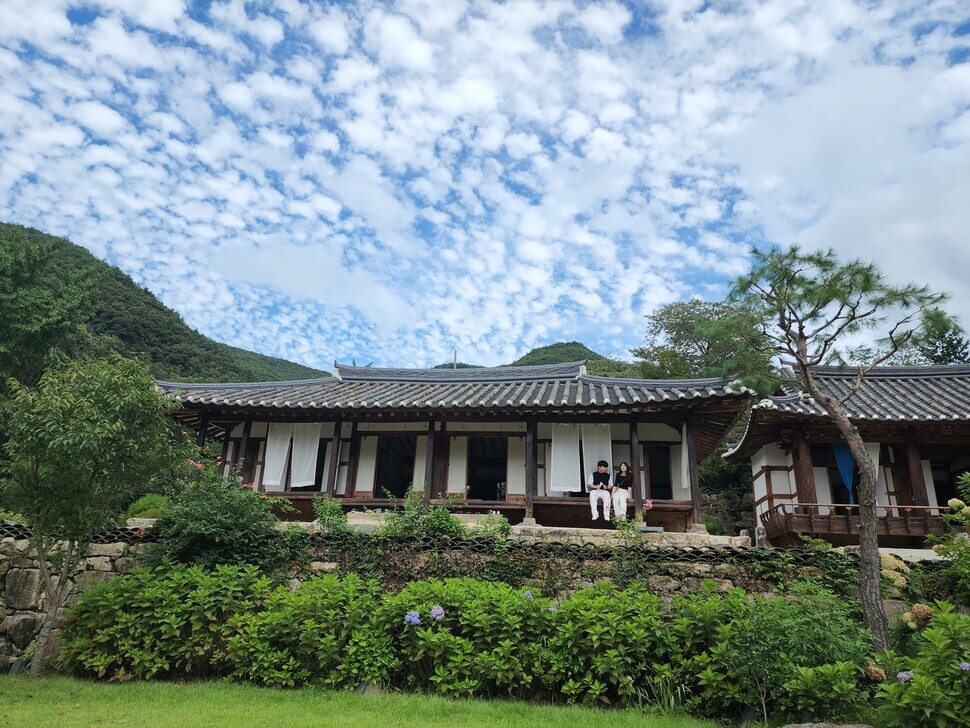
Near Soyang House is the Awon Museum and Hotel, which was created by relocating a 250-year-old structure from the South Gyeongsang city of Jinju. It is operated today as a museum and a setting for “hanok stay” experiences.
The special cultural spaces in Oseong Hanok Village are also worth visiting. Next to Soyang House is Flicker, Wangju’s premier independent bookstore. Flicker also occupies a hanok structure. Selling primarily fiction and essay collections, it holds various cultural events including book talks by artists and open flea markets.
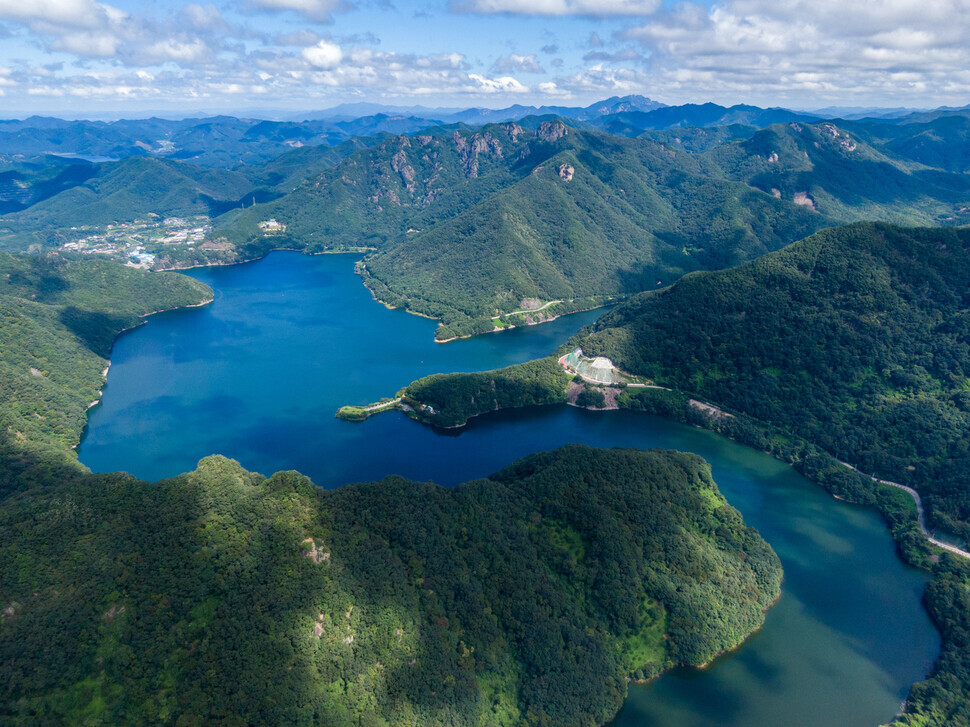
Another unmissable autumn travel stop is Gosan Recreational Forest, which is considered a top destination for viewing autumn foliage. Situated on the foothills of Ansu Mountain, its mountain-ringed position gives it a cozy feel.
Among the facilities here are a hibiscus-themed botanical garden, which boasts around 180 varieties of hibiscus, and the Mangyeong River aquatic organism science center, where visitors can observe species of fish and aquatic insects.
The recreational forest also boasts many quiet walking trails throughout. A particular highlight is the 4-kilometer route that circles the Gosan Reservoir above the recreational forest. Its abundance of maples makes it a great walking destination in the fall.
When autumn comes, Gosan Recreational Forest transforms into a festival site. The Wanju Wild Food Festival is Wanju’s premier event, taking place from Sept. 30 to Oct. 2.
The different programs on offer are set to include a local food cooking contest using ginger and other Wanju specialties; a light festival for young people; a selection of local grilled foods to taste; and a local food show with chefs Oh Se-deuk and Cheon Sang-hyeon taking part. On Saturday, Oct. 1, a nationwide singing contest will be recorded here for the KBS1 network.
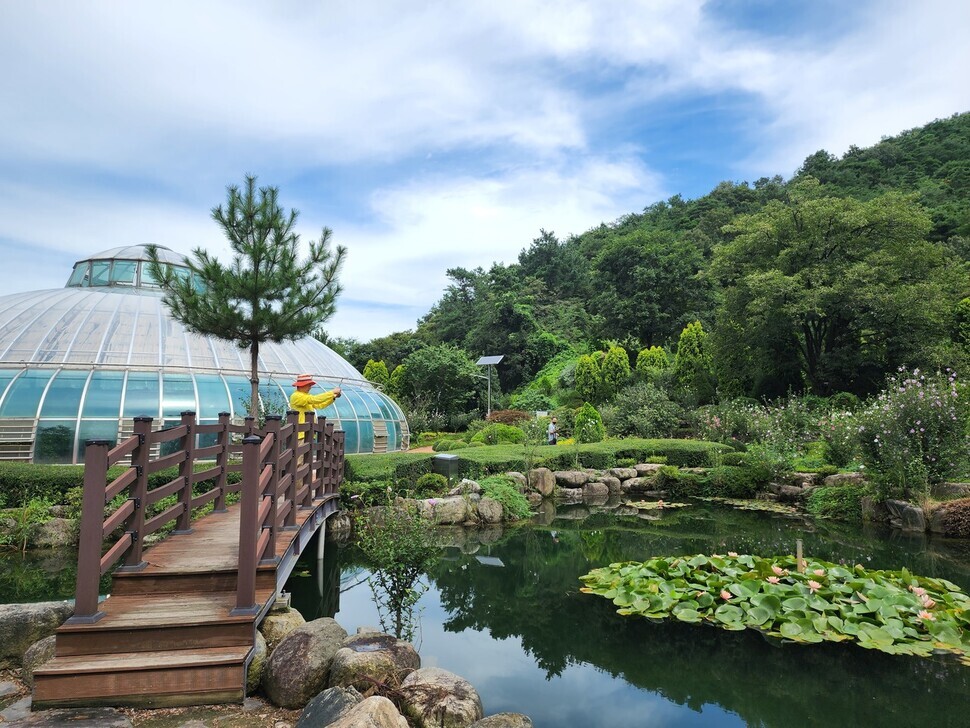
Those looking to travel Wanju by public transportation can take advantage of the county’s city tour bus. Every Saturday through Nov. 19, the county will be operating an autumn city tour bus that focuses on the sites where BTS shot photos for their album. The bus departs from Iksan Station at 9:20 am and travels around Samrye Culture & Arts Village, Wibongsanseong Fortress, and the Oseong Hanok Village in Soyang before returning to the departure point at 6 pm.
The tour costs 3,000 won for adults. Discounts of 5%–10% are available for KORAIL users who make reservations. Throughout the course, a culture tourism guide provides an explanation of the local history and culture.
Those interested can apply through the Wanju County Tourism Marketing Support Center homepage and the KORAIL website.
Photos and article by Her Yun-hee, staff reporter
Please direct questions or comments to [english@hani.co.kr]

Editorial・opinion
![[Column] Park Geun-hye déjà vu in Yoon Suk-yeol [Column] Park Geun-hye déjà vu in Yoon Suk-yeol](https://flexible.img.hani.co.kr/flexible/normal/500/300/imgdb/original/2024/0424/651713945113788.jpg) [Column] Park Geun-hye déjà vu in Yoon Suk-yeol
[Column] Park Geun-hye déjà vu in Yoon Suk-yeol![[Editorial] New weight of N. Korea’s nuclear threats makes dialogue all the more urgent [Editorial] New weight of N. Korea’s nuclear threats makes dialogue all the more urgent](https://flexible.img.hani.co.kr/flexible/normal/500/300/imgdb/original/2024/0424/7317139454662664.jpg) [Editorial] New weight of N. Korea’s nuclear threats makes dialogue all the more urgent
[Editorial] New weight of N. Korea’s nuclear threats makes dialogue all the more urgent- [Guest essay] The real reason Korea’s new right wants to dub Rhee a founding father
- [Column] ‘Choson’: Is it time we start referring to N. Korea in its own terms?
- [Editorial] Japan’s rewriting of history with Korea has gone too far
- [Column] The president’s questionable capacity for dialogue
- [Column] Are chaebol firms just pizza pies for families to divvy up as they please?
- [Column] Has Korea, too, crossed the Rubicon on China?
- [Correspondent’s column] In Japan’s alliance with US, echoes of its past alliances with UK
- [Editorial] Does Yoon think the Korean public is wrong?
Most viewed articles
- 1[Column] Park Geun-hye déjà vu in Yoon Suk-yeol
- 2Thursday to mark start of resignations by senior doctors amid standoff with government
- 3N. Korean hackers breached 10 defense contractors in South for months, police say
- 4Kim Jong-un expressed ‘satisfaction’ with nuclear counterstrike drill directed at South
- 5[Editorial] New weight of N. Korea’s nuclear threats makes dialogue all the more urgent
- 6Will NewJeans end up collateral damage in internal feud at K-pop juggernaut Hybe?
- 7[Column] ‘Choson’: Is it time we start referring to N. Korea in its own terms?
- 8[Editorial] Japan’s rewriting of history with Korea has gone too far
- 9[Cine feature] A new shift in the Korean film investment and distribution market
- 10[Column] The president’s questionable capacity for dialogue